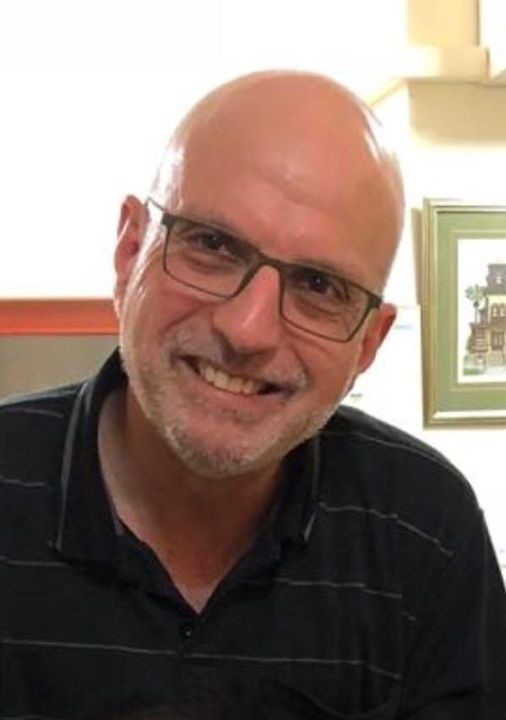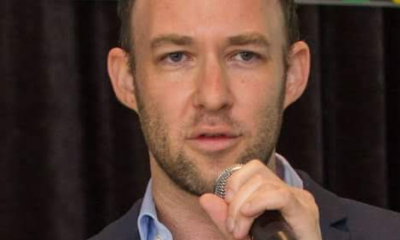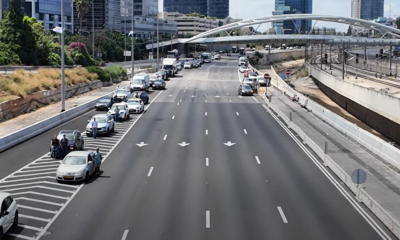
OpEds

“Never again” isn’t a slogan, it’s a commitment
Back in Zimbabwe, I was too young and self-absorbed to understand the ramifications of the Holocaust. My Barmitzvah teacher, Reverend Szlapak, was a Holocaust survivor. We called him “Shlapsie”, and often played tricks on him. We made fun of him and his quirks, but we were always aware of the tattoo on his left arm. Thinking back, I feel guilty about the tricks we played on him. And yet, he instilled in me a way to find meaning in so many prayers and how to daven.
Later, as a teenager in South Africa, at Herzlia school and in Habonim, we observed Yom Hashoah out of respect as Jews and as a way of identifying with Israel’s day of mourning. But we were too enamoured by our Zionist righteousness to concentrate on the people, the survivors, who lived among us and in our communities. Youth has a way of doing that. As movement members, our passion to make aliya often overshadowed our ability to truly connect with Holocaust survivors.
Little did we know or take an interest in what our friends, the descendants of Holocaust survivors, went through in their home environments. We had no idea.
All that changed for me on our Hadracha Course in 1978/1979, when we visited Yad Vashem and Kibbutz Mashoah and participated in Shoah educational seminars. It was in Mashoah that we confronted the conundrum of humans doing to other humans the incomprehensible and trying to understand how the most cultured society in Europe could suddenly become the most coldly barbaric. We learned that no explanation could ever explain or justify the genocidal frenzy that gripped German society as well as the countries they conquered – from France, the hub of European gentility, to Poland, Lithuania, Hungary, and Latvia – who all seized the opportunity to embrace their antisemitism publicly, elevating it to the status of a national value.
And still, the significance and full ramifications of the Holocaust went over our heads.
It was only once I made aliya that I began to comprehend fully the connection between the Holocaust and the imperative necessity for Israel’s survival on an elemental level as opposed to it being an intellectual cliche. But, back in the 1980s, society in Israel wasn’t yet ready to embrace the psychological scars that haunted survivors. They lived a double life: on the one hand, they built the country, and on the other, in the privacy of their homes, they grappled with their nightmares and the feelings of guilt that they had survived, too ashamed, perhaps, to tell anyone. “Led like lambs to the slaughter” was the passive-aggressive finger of accusation pointed at survivors, and this further encouraged them to suppress their post-traumatic stress disorder. Because that’s what it was.
Only later did the atmosphere in the country change, and we began to understand the true heroism of resistance, whether it was armed resistance in the ghettos and among the partisans, or the spiritual resistance of concentration camp survivors who determinedly clung to survival and in so doing defied the Nazis and the master plan devised at the Wannsee Conference.
Personal testimonies made us aware not only of the enormity of the horrors of the Holocaust, but also its impact on the lives of our fathers and mothers, or our grandparents, and the impact it had on our lives, our psyches, even our parenting. Because, as Zimra Vigoda writes, trauma can be intergenerational.
However, it has always been a struggle to find a way for the full magnitude of how the victims suffered to pierce our consciousness. It was so long ago, and it’s so removed from our lives that it’s hard for us to relate. We paid tribute, but not empathy. Much of that has to do with our inability to visualise their suffering and the inhumane reality they lived.
Now, the Holocaust generation is passing on. Soon, there will be no one left to sit before us and tell his or her personal story. We need to think about how we can bring remembrance to life so that it touches us, so that we can truly honour the memories of the victims and the survivors. How can we humanise their experiences? How can we use it to make us feel their terror and desperation, their determination to survive, and also understand the resignation of those who accepted their fate? That’s the challenge that faces us.
Recently, I came across an extraordinary project that uses art to connect us to our tortured past. It’s called the David Labkovski Project. It manages to bridge the gap between having to imagine their life, fears, and hopelessness and being able to immerse ourselves into the scenes and almost experience it ourselves through an uncannily accurate portrayal of life during this period in his art. When there are no more personal stories of survivors to move us, this will become the way to make Yom Hashoah touch us.
The Holocaust underlines the imperative necessity for a Jewish homeland. After centuries of living as guests in countries whose attitude towards us vacillated between grudging, fragile hospitality to rejection and persecution, the true extent of how much we weren’t wanted was brought home by a Final Solution and the genocide with which most European countries (and others) willingly co-operated.
The purveyor of this genocide, Germany, was a defeated, humiliated country that lost World War I, forced to pay crippling reparations. It was this national emotion that precipitated Hitler and his party to adopt the emblem of a Phoenix rising from the ashes to portray the Third Reich.
How sweet is the irony, that we, the survivors and descendants of the survivors, were the ones to rise – literally – from the ashes of the Holocaust and to create a strong, vibrant home (and shelter) for Jews, with the wings of one of the world’s most powerful aerial fighting forces.
We are the Phoenix! There’s little more resoundingly gratifying than that.
For “never again” to have meaning, “yizkor” (remember) must come first. We must determine that “never again” isn’t an empty slogan, but a commitment.
- Paul Mirbach made aliya in 1982 to Kibbutz Tuval, a new kibbutz, just being built, with his Habonim garin.











Wendy-Ann Chick
May 5, 2022 at 2:31 pm
Brilliant article. Resonates right now especially with the discovery in the last year of a relative in the Netherlands whose father survived 6 concentration camps. All our family was taken for “gone” when suddenly out of the blue we were found by who is now my second cousin. His grandmother and my grandmother were sisters! His father (my mother’s first cousin) was the only survivor of the families of my mother’s parents who remained in the Netherlands, my mother’s family escaped the horrors because they came to live in South Africa in 1929. This has been a rollercoaster journey, my only regret being none of the elders lived long enough to know there was at least one survivor and like many others, they were large families with countless losses.
Unfortunately, my cousin’s father gave up his Jewish identity after the war for fear of recrimination and who can rightly blame him after surviving the horrors of 6 concentration camps. He also refused point blank to speak about the war but through the amazing research his son (my second cousin) has made into the family, close and extended, we have so much more insight and information we thought was lost for eternity. I have in my possession photos my late grandmother brought from the Netherlands and through our connection we have carefully put names inscribed on the back of the photos to their rightful places in the family. The victims now live on! A bitter, sweet experience.
Unfortunately I am unable to share this incredible story in any detail as my cousin is respecting his father’s right to remain silent about the war. Maybe over time he will feel his father’s healing through his own research and share the stories that should never be lost.
So the Holocaust had a direct impact on our family, my grandmother was forever resentful and angry. There was no space in her life for forgiveness, the intergenerational trauma you so correctly speak of was sadly passed on. So well phrased “never again is a commitment”.
Paul Mirbach
May 5, 2022 at 7:16 pm
Wow! Thank you!